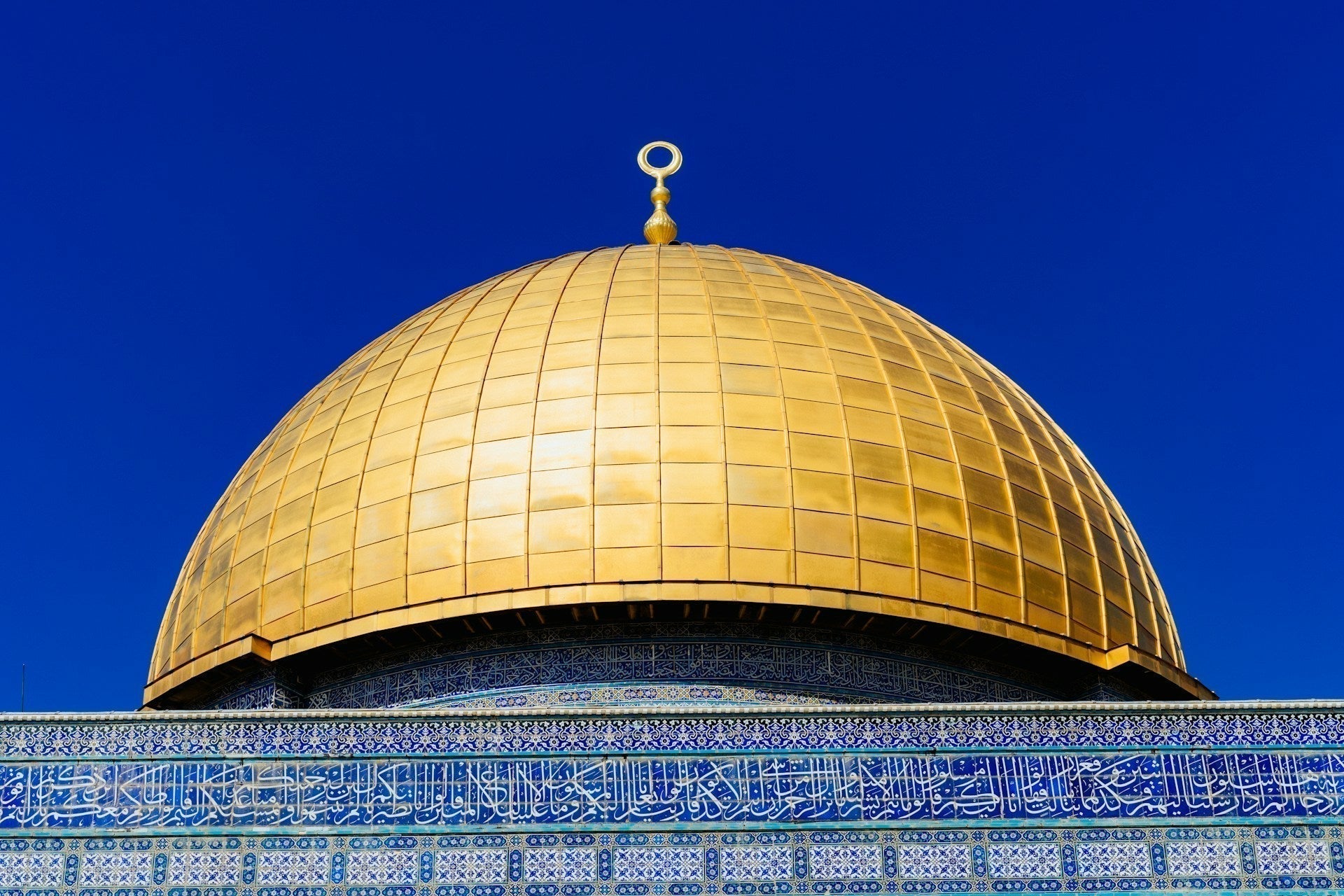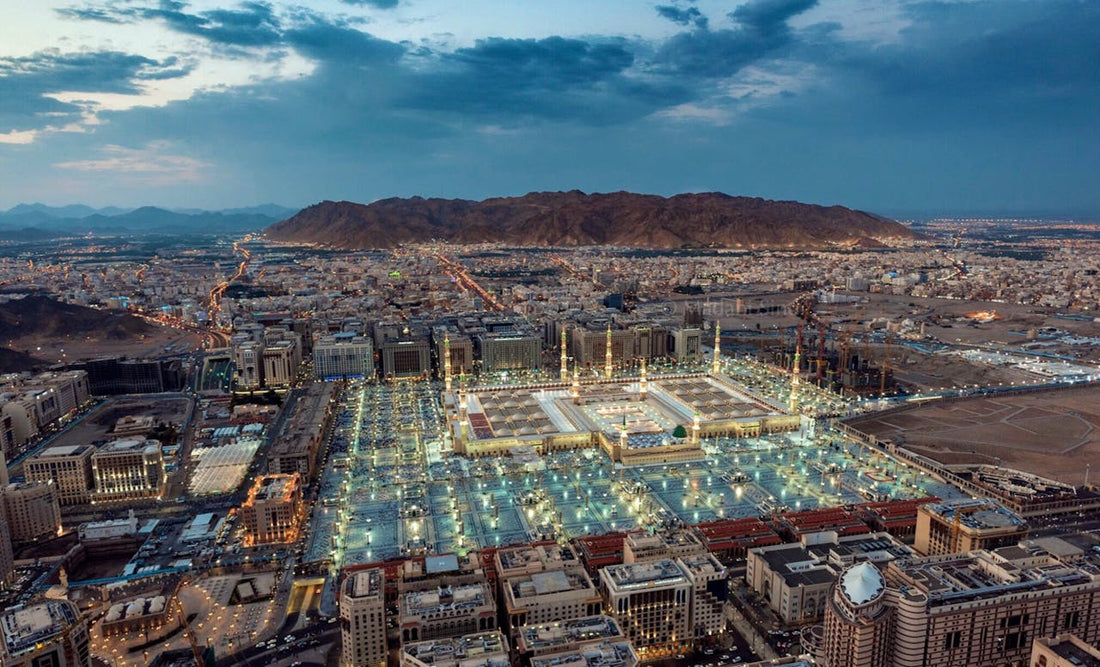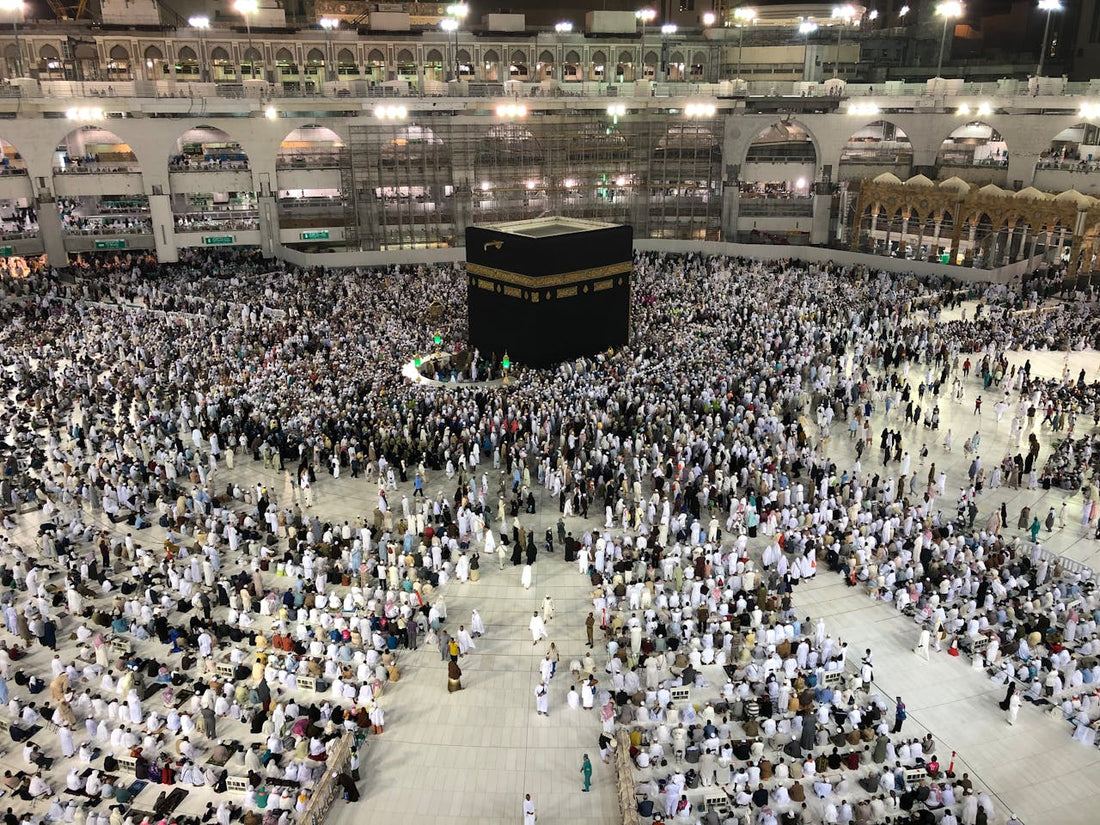Jerusalem, known in Arabic as Al-Quds (القدس), is more than a city; it is a sanctified cradle of prophethood, pilgrimage, and divine remembrance.
For Muslims, it holds deep eschatological value as the third-holiest site in Islam after Makkah and Madinah.
Here, sacred Islamic sites are nestled within cobbled streets and ancient walls, forming a spiritual constellation that connects believers to the legacy of Prophet Ibrahim, Prophet Musa, and Prophet Muhammad (peace be upon them all).
Embarking on Ziyarat Places in Jerusalem is a deeply enriching act, both spiritual and historical.
From the majestic Masjid Al-Aqsa to the serenity of Bab al-Rahmah Cemetery, this pilgrimage offers a unique chance to stand where the Prophets (عليهم السلام) once stood.
This guide will lead you through the most revered holy sites in the city, supported by historical references, embedded maps, and religious context.
What is Ziyarat in Jerusalem?
The term Ziyarat (زيارة) refers to a “visit” undertaken with reverence to places connected with the Prophets, righteous figures, or significant Islamic events.
In the context of Jerusalem, ziyarat takes on profound spiritual weight.
Unlike obligatory pilgrimages like Hajj, Ziyarat in Jerusalem is a voluntary act of devotion, often undertaken to revive love for the Prophets (عليهم السلام) and reaffirm one’s faith through interaction with historic sites.
Major Ziyarat Sites in Jerusalem:
-
Masjid Al-Aqsa
-
Dome of the Rock (Qubbat al-Sakhrah)
-
Al-Buraq Wall
-
Maqam of Prophet Dawud (عليهم السلام)
-
Bab al-Rahmah Cemetery
-
Marwani Prayer Hall
-
Masjid Al-Qibli
-
Masjid Al-Marwani
-
Al-Aqsa Library
-
Tomb of Salahuddin Al-Ayyubi
These are among the most visited pilgrimage sites, each holding unique significance in the timeline of Islam and the life of the Prophets (عليهم السلام).
How many Ziyarat sites are there in Jerusalem?
There are at least 10 major ziyarat places in Jerusalem, each associated with a Prophet, a historical event, or sacred worship.
These include Masjid Al-Aqsa, Dome of the Rock, Maqam Nabi Dawud, and the Al-Aqsa Library, among others.
Most are located within the Temple Mount area, known in Islam as Haram al-Sharif, and inside the walled Old City.
The Jewish Quarter also borders key ziyarat sites, notably the Al-Buraq Wall. Together, these locations offer a Jerusalem holy sites map of immense importance for Muslims seeking closeness to Allah (سُبْحَانَهُ وَتَعَالَى) through sacred geography.
This interconnectedness of holy sites in Israel and Palestine reflects centuries of Islamic tradition and reinforces Jerusalem’s place in the hearts of believers.
Holy Places in Jerusalem for Muslims

When one asks, "What are the 3 major holy sites in Jerusalem?", the answer includes:
-
Masjid Al-Aqsa
-
Dome of the Rock
-
Al-Buraq Wall
These are not only central to Islam but are recognized across all Abrahamic traditions, making Jerusalem a cornerstone of Palestine’s sacred heritage.
Other prominent holy places in Jerusalem for Muslim pilgrims include:
-
Maqam of Prophet Dawud (عليهم السلام) on Mount Zion.
-
Bab al-Rahmah Cemetery, where Sahabah like Shaddad ibn Aws rest.
-
Masjid Al-Qibli, the active prayer space of Al-Aqsa.
-
Al-Aqsa Library, preserving classical Islamic manuscripts.
-
Marwani Musalla, also known as Solomon’s Stables.
These Islamic sites collectively reflect centuries of spiritual significance, prophecy, and architectural heritage.
Masjid Al-Aqsa

Masjid Al-Aqsa is the beating heart of ziyarat places in Jerusalem.
Mentioned explicitly in Surah Al-Isra (17:1), it was the first Qiblah, the site of Isra wal-Mi’raj, and is ranked just after Masjid al-Haram and Masjid an-Nabawi in sanctity.
The entire compound spans 144,000 square meters, housing several historic sites, including the Masjid Al-Qibli, Masjid Al-Marwani, and the Dome of the Rock.
The area is part of the Temple Mount Jerusalem zone, an area Muslims call Haram al-Sharif.
Dome of the Rock (Qubbat al-Sakhrah)

The Dome of the Rock is one of the oldest and most iconic Islamic sites. Built in 691 CE, it marks the spot where Prophet Muhammad (ﷺ) ascended to the heavens during Mi’raj.
The rock beneath the golden dome holds deep spiritual significance and is revered as a connection between the earthly and divine realms.
Located within the Temple Mount, it remains a central symbol of Jerusalem’s sacred history and architecture.
Al-Buraq Wall

The Al-Buraq Wall is where the Prophet (ﷺ) tied the celestial steed Buraq during the Isra journey.
Though close to what Jews call the Western Wall, Muslims consider it part of the Al-Aqsa sanctuary.
Situated near the Jewish Quarter, it reflects Jerusalem’s layered religious heritage and stands as a key pilgrimage site in Palestine.
Maqam of Prophet Dawud (عليهم السلام)
This site on Mount Zion is associated with Prophet Dawud (عليهم السلام) and is among the few Islamic sites overlapping with biblical history.
A quiet and sacred ziyarat location, it reminds pilgrims of the Prophet’s wisdom and leadership.
It’s one of Jerusalem’s most revered historic sites.
Bab al-Rahmah Cemetery

Facing the Mount of Olives, this ancient cemetery holds the graves of prominent Sahabah, including Shaddad ibn Aws.
Known as the “Gate of Mercy,” it is a spiritual place where visitors reflect, recite Fatiha, and remember the companions who helped build the early Muslim Ummah in Palestine.
Marwani Prayer Hall

Also known as Solomon’s Stables, this underground mosque lies beneath the Temple Mount.
Restored for prayer, it is now a prominent part of the Aqsa complex and can hold thousands of worshippers.
It symbolizes Islamic continuity under Jerusalem’s surface and is a major pilgrimage site.
Masjid Al-Qibli

Located at the southern end of Masjid Al-Aqsa, Masjid Al-Qibli is the main indoor prayer hall.
It directly faces the Qiblah and is central to congregational prayer.
With its beautiful mihrab and history, it is a vital stop during ziyarat in Jerusalem.
Masjid Al-Marwani

This revived mosque, deep beneath the Aqsa compound, is often confused with Marwani Hall but stands on its own as a prayer space.
Today, it’s used for salah and Islamic learning, offering pilgrims a serene space away from the busy upper courtyards.
Al-Aqsa Library
The Al-Aqsa Library is a treasure trove of Islamic knowledge. It houses rare Qur’anic manuscripts, Hadith texts, and centuries-old tafsir works.
For seekers of knowledge, this spot is an intellectual ziyarat site within the greater aqsa sanctuary.
Tomb of Salahuddin Al-Ayyubi
This modest tomb outside the Old City honors Salahuddin Al-Ayyubi, who liberated Jerusalem in 1187.
Visiting his grave is a tribute to Islamic courage, unity, and leadership. It’s a reminder of our duty to protect and respect holy sites.
How to Perform Ziyarat in Jerusalem
Follow these steps to spiritually benefit from your ziyarat:
-
Make niyyah for the sake of Allah (سُبْحَانَهُ وَتَعَالَى)
-
Perform wudhu
-
Dress respectfully
-
Offer two rak’ahs upon entering a site
-
Read relevant duas and Qur’an
-
Reflect silently; avoid idle talk
-
Donate where appropriate
-
Respect each location as a sacred space
This transforms your visit from sightseeing into a heartfelt pilgrimage experience.
Frequently Asked Questions
What are the 3 major holy sites in Jerusalem?
Masjid Al-Aqsa, Dome of the Rock, and Al-Buraq Wall.
Is there a Holy Sites in Jerusalem Map?
Yes, maps often feature the Temple Mount, Old City quarters, and all major ziyarat areas
Is this a Holy site in Jerusalem for Islam only?
No, while Islamic sites dominate, the city also hosts sacred places for Christians and Jews, forming a unique holy sites in Palestine.
Is Masjid Al-Aqsa mentioned in the Qur’an?
Yes, in Surah Al-Isra (17:1). It is referred to as masjid al-aqsa, where Isra wal-Mi’raj began.
Summary – Ziyarat Places in Jerusalem
The Ziyarat Places in Jerusalem are far more than historical relics, they are living testaments to faith, perseverance, and the divine connection between earth and the heavens.
Each stone of Al-Quds bears the memory of the Prophets (عليهم السلام) who walked its sacred paths and delivered messages of tawheed, justice, and mercy.
These holy sites serve as spiritual lighthouses, guiding the hearts of believers back to the essence of Islam.
From the radiant majesty of the Temple Mount, home to Masjid Al-Aqsa and the Dome of the Rock, to the silent depth of Bab al-Rahmah Cemetery, where the Sahabah rest, every location in Jerusalem whispers reminders of the divine.
These aren't just stops on a tour; they are soul-awakening milestones in a journey of remembrance.
Whether it’s standing in salah at Masjid Al-Aqsa, visiting the tomb of Salahuddin Al-Ayyubi, or contemplating the legacies preserved in Masjid Umar and Masjid Ibrahim, each moment in Jerusalem is a moment shared with eternity.
These sacred experiences tie us not only to Islamic history but to a timeless spiritual reality that continues to inspire the Ummah.
To walk the path of Ziyarat in Jerusalem is to walk with the Prophets, to reflect on divine truth, and to renew one’s faith amid the sacred breath of revelation.





